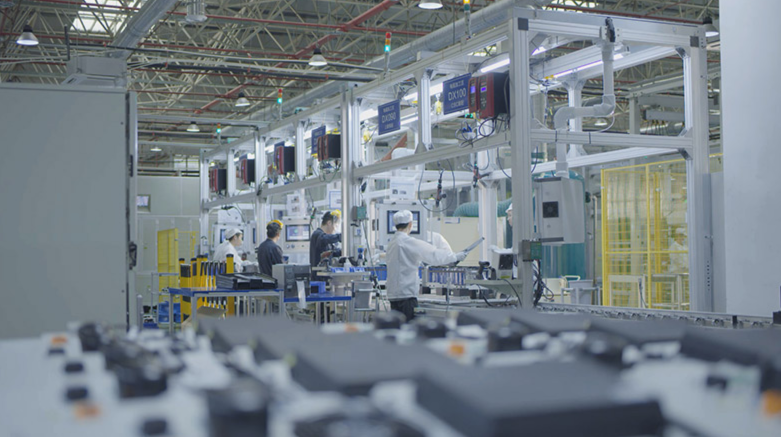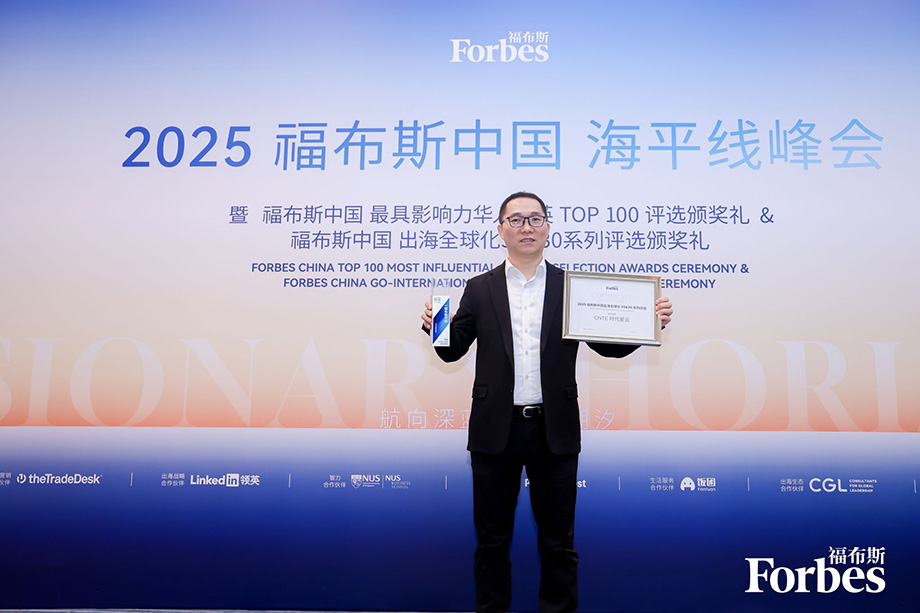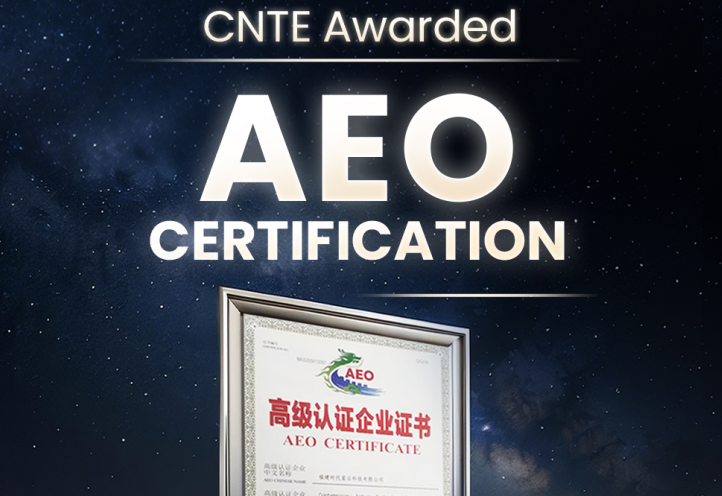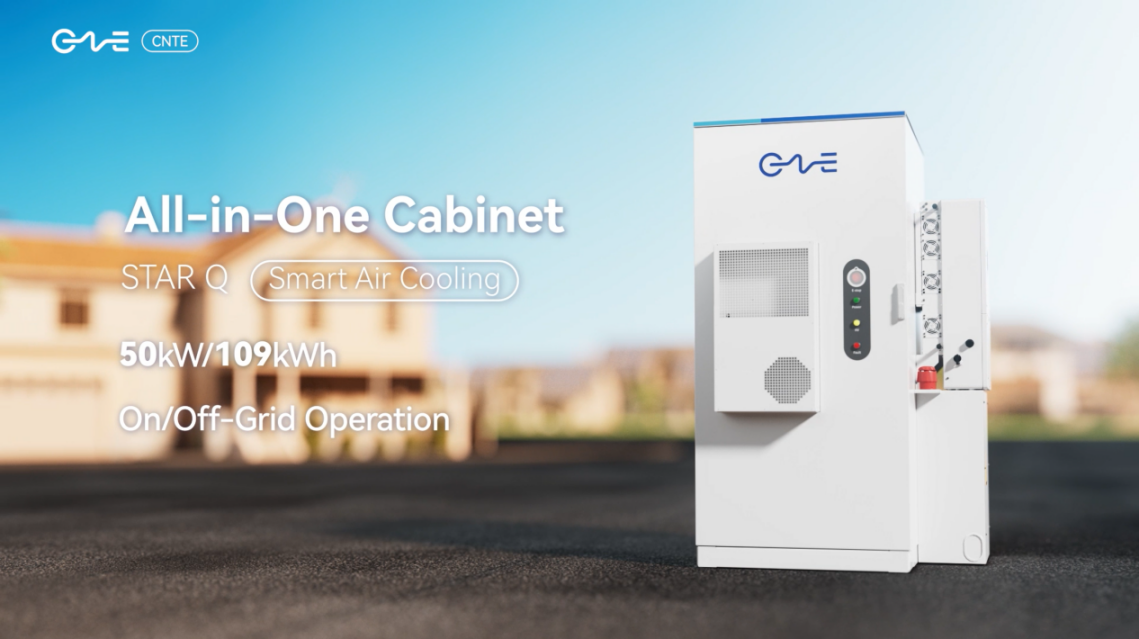Charting Path Forward: Lithium-ion Battery 100ah as Catalysts for Secure Energy Transitions
The International Energy Agency (IEA) has underscored the pivotal role of batteries in driving the global energy transition. With ambitious targets set for 2030, the need for scalable and efficient energy storage solutions has never been more pressing. Among these, lithium-ion batteries have emerged as the frontrunners, propelling the world towards a sustainable future. At the forefront of this movement is the lithium-ion battery 100Ah, manufactured by CNTE, heralding a new era of energy storage capabilities.
Introduction
1.1 Lithium-ion Batteries: Powering the Modern World
Lithium-ion batteries have revolutionized the way we power our devices, from smartphones to electric vehicles. These rechargeable batteries have become indispensable in modern technology due to their high energy density, long cycle life, and relatively low self-discharge rate. One particular specification that stands out in the realm of lithium-ion batteries is the 100Ah capacity, which holds significant importance across various applications.
1.2 The Significance of 100Ah Capacity
In the landscape of lithium-ion batteries, the 100Ah capacity specification holds a crucial position. It represents the amount of charge a battery can store, directly impacting its runtime and performance. This capacity is particularly important in applications where sustained power delivery is essential, such as electric vehicles, renewable energy storage systems, and off-grid power solutions.
Composition and Working Principle
2.1 Understanding the Inner Workings
Lithium-ion batteries are composed of several key components, each playing a vital role in their operation. These include electrodes (anode and cathode), separators, electrolyte, and current collectors. Within this structure, lithium ions shuttle between the electrodes during charging and discharging cycles.
2.2 The Chemistry Behind the Magic
At the heart of a lithium-ion battery lies a series of electrochemical reactions that facilitate the storage and release of energy. During charging, lithium ions migrate from the positive electrode (cathode) to the negative electrode (anode), where they are stored. Conversely, during discharging, the ions move back to the cathode, generating an electric current in the process.
2.3 The Role of Lithium Ions
Lithium ions are the primary carriers of charge within the battery. Their movement between the electrodes is what enables the flow of electricity, powering our devices and vehicles. The ability of lithium ions to intercalate within the electrode materials without causing structural damage is a key factor in the longevity and efficiency of lithium-ion batteries.
The Dominance of Lithium-Ion Batteries
3.1 Meeting Growing Demand
In recent years, the demand for energy storage solutions has skyrocketed, driven by the rapid expansion of renewable energy sources and the electrification of transportation. Lithium-ion batteries have emerged as the preferred choice due to their high energy density, long cycle life, and reliability. The lithium-ion battery market has witnessed unprecedented growth, with the energy sector now accounting for over 90% of annual lithium-ion battery demand. This surge in demand underscores the pivotal role of lithium-ion batteries in powering the global energy transition.
3.2 Innovation Driving Cost Reductions
One of the key drivers behind the widespread adoption of lithium-ion batteries is the remarkable decline in costs. Over the past 15 years, battery costs have plummeted by more than 90%, making them increasingly affordable and accessible. This dramatic cost reduction has been fueled by technological innovation, economies of scale, and supportive policies. However, further cost reductions are necessary to facilitate global scalability while maintaining quality and technological advancements.
3.3 Expanding Application in Electric Vehicles
Electric vehicles (EVs) represent a significant market for lithium-ion batteries, with 14 million new electric cars added in 2023 alone. The lithium-ion battery 100Ah has played a crucial role in powering these vehicles, offering high energy density and rapid charging capabilities. As the automotive industry transitions towards electrification, the demand for lithium-ion batteries is expected to surge further, driving innovation and economies of scale.
Applications
4.1 Versatile Powerhouses: Applications of Lithium-ion Battery 100Ah
Lithium-ion batteries with a capacity of 100Ah find extensive use across a wide range of industries and applications, owing to their high energy density and long-lasting performance. From powering electric vehicles to storing renewable energy, these batteries have proven their versatility and reliability.
4.2 In Automotive
In the automotive industry, 100Ah lithium-ion batteries serve as the backbone of electric vehicles (EVs) and hybrid electric vehicles (HEVs). These batteries provide the energy storage needed to propel vehicles with zero emissions, reducing reliance on fossil fuels and mitigating environmental impact. Examples include popular EV models such as Tesla’s Model S and Nissan’s Leaf, which rely on 100Ah lithium-ion battery packs for extended range and fast charging capabilities.
4.3 In Renewable Energy Storage
Renewable energy sources such as solar and wind power require efficient energy storage solutions to overcome intermittency issues. 100Ah lithium-ion batteries serve as ideal storage systems, enabling the capture and utilization of renewable energy when demand is low or supply is abundant. They can be deployed in residential, commercial, and utility-scale settings, contributing to the transition toward a more sustainable energy landscape.
4.4 In Marine Applications
The marine industry benefits greatly from the use of 100Ah lithium-ion batteries for propulsion systems in electric boats and marine vessels. These batteries offer high energy density and power output, allowing for extended cruising ranges and reduced environmental impact compared to traditional fossil fuel-powered engines. Moreover, their compact size and lightweight nature make them well-suited for use in smaller watercraft and yachts.

4.5 In Consumer Electronics
In the realm of consumer electronics, 100Ah lithium-ion batteries power a wide array of devices, ranging from smartphones and laptops to power banks and portable speakers. Their high capacity and energy density ensure prolonged usage between charges, enhancing the convenience and mobility of these devices for users on the go. Additionally, advancements in battery technology have led to the development of smaller and lighter batteries without compromising performance.
Challenges and Considerations
Despite their numerous advantages, 100Ah lithium-ion batteries are not without challenges and considerations that need to be addressed for optimal performance and safety.
5.2 Cost Considerations
One of the primary challenges associated with 100Ah lithium-ion batteries is the cost of production. While advancements in manufacturing processes have led to a gradual decrease in costs over time, lithium-ion batteries remain relatively expensive compared to conventional lead-acid batteries. However, economies of scale and continued research efforts are expected to drive down costs further in the coming years.
5.3 Safety Concerns
Safety is paramount when it comes to lithium-ion batteries, especially those with high energy densities like 100Ah variants. Issues such as thermal runaway, short circuits, and overcharging pose potential risks of fire or explosion if not properly managed. Implementing robust battery management systems (BMS) and incorporating safety features such as thermal cutoff switches and flame-retardant materials are crucial for mitigating these risks and ensuring safe operation.
5.4 Degradation Over Time
Like all rechargeable batteries, 100Ah lithium-ion batteries experience degradation over time due to factors such as cycling, temperature fluctuations, and calendar aging. This degradation manifests as a gradual loss of capacity and performance, ultimately reducing the battery’s lifespan. Ongoing research and development efforts focus on improving battery chemistries, enhancing durability, and developing advanced diagnostics and prognostics to predict and manage degradation more effectively.
The Future Landscape of Battery Technology
6.1 Emerging Technologies
While lithium-ion batteries currently dominate the market, emerging technologies are poised to disrupt the status quo. Sodium-ion batteries, in particular, have garnered significant attention due to their lower costs and abundance of raw materials. The IEA predicts that sodium-ion batteries could account for a growing share of stationary storage applications, complementing the role of lithium-ion batteries. CNTE, as a leading manufacturer, is at the forefront of developing and commercializing these next-generation battery technologies.
6.2 Innovations in Battery Chemistry
The quest for improved performance and sustainability has spurred innovations in battery chemistry. From enhancing energy density to prolonging cycle life, researchers are exploring novel materials and manufacturing processes to push the boundaries of battery technology. CNTE, with its cutting-edge research and development capabilities, is driving innovation in lithium-ion battery chemistry, paving the way for more efficient and eco-friendly energy storage solutions.
6.3 Scaling Up for Global Impact
As the world strives to meet its 2030 targets for renewable energy deployment, the scalability of battery technology becomes paramount. To enable widespread adoption, battery manufacturers must ramp up production capacity while ensuring affordability and reliability. CNTE, with its state-of-the-art manufacturing facilities and commitment to quality, is well-positioned to meet the growing demand for lithium-ion batteries, driving the global energy transition forward.
Manufacturer Spotlight: CNTE
7.1 Leading the Charge
When it comes to high-quality lithium-ion batteries, CNTE stands out as a leading manufacturer. With a reputation for reliability and innovation, CNTE has been at the forefront of advancing battery technology for various applications. Their 100Ah lithium-ion batteries combine cutting-edge materials and manufacturing processes to deliver superior performance and durability.
7.2 Commitment to Excellence
CNTE’s dedication to excellence extends beyond product quality to encompass environmental stewardship and customer satisfaction. By adhering to stringent quality control measures and investing in research and development, CNTE continues to push the boundaries of what lithium-ion batteries can achieve.
7.3 Partnering for a Sustainable Future
As the demand for energy storage solutions continues to grow, CNTE remains committed to collaborating with partners worldwide to address the evolving needs of the market. Whether it’s powering electric vehicles or storing renewable energy, CNTE’s 100Ah lithium-ion batteries are paving the way for a cleaner, more sustainable future.

Conclusion: Empowering Tomorrow, Today
The rise of lithium-ion batteries represents a paradigm shift in the way we store and utilize energy. From powering electric vehicles to enabling renewable energy integration, these versatile energy storage solutions are at the forefront of the clean energy revolution. As the demand for sustainable energy continues to escalate, the lithium-ion battery 100Ah, manufactured by CNTE, stands as a beacon of innovation and progress, propelling us towards a greener and more resilient future.
Get in Touch
Recent Posts
Tags
- battery to grid
- better battery renewable energy
- charging station
- electrical energy storage exhibition
- energy storage system solar
- energy tech battery
- ess battery system
- large solar storage batteries
- new battery storage
- optical storage integration
- pcs battery system
- price per kwh battery storage
- smart battery storage
- solar battery container
- solar energy battery storage system
- solar energy storage technology
- solar ess system
- Solar panel energy storage systems
- Solar Power Plant Battery
- solar pv and battery storage systems





